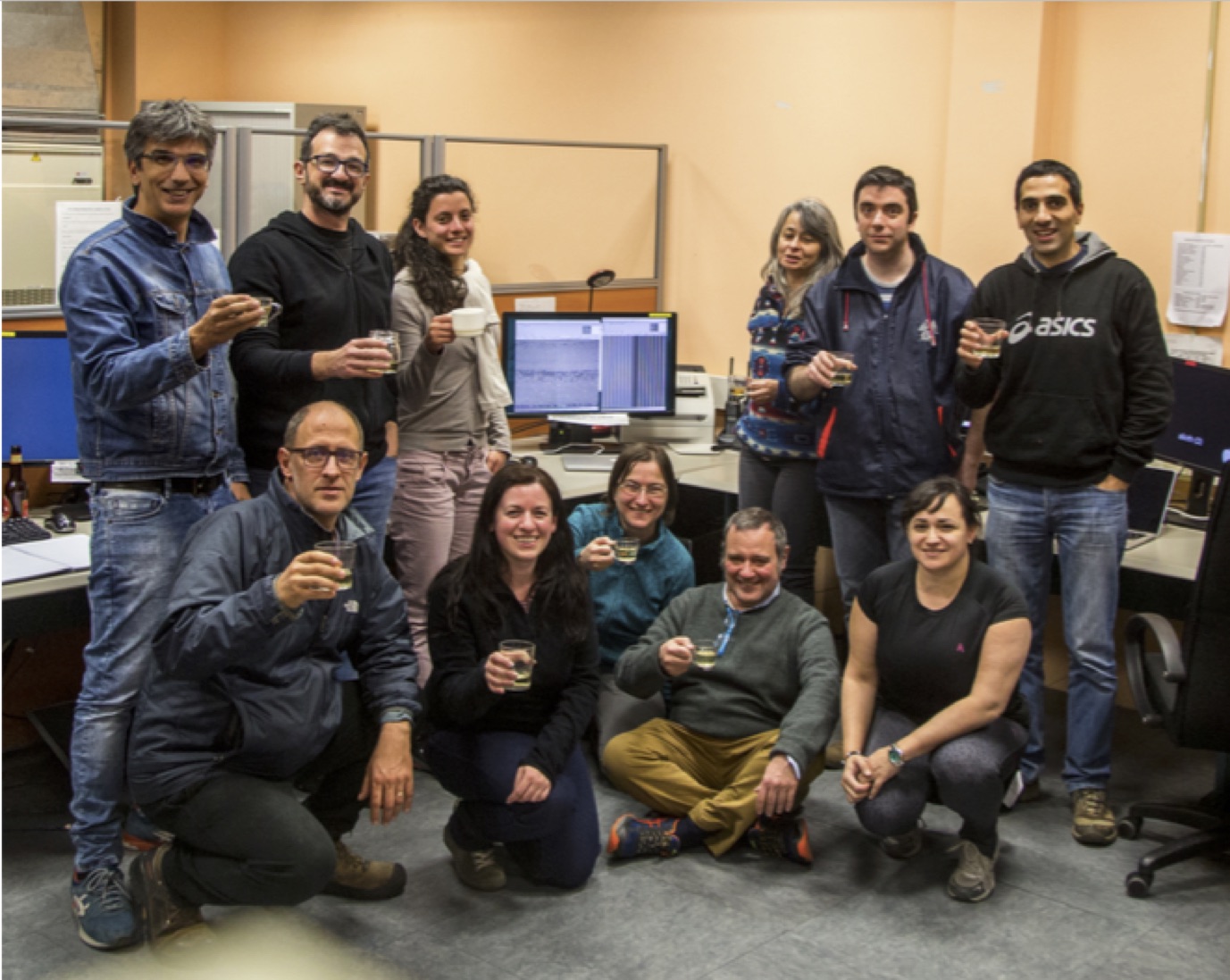GIARPS: the high resolution at TNG goes infrared
At Telescopio Nazionale Galileo, during the first days of March this year, the third commissioning run for the GIARPS instrument took place. After the last November run, when the infrared spectrograph GIANO-B was set in place, we could now test the functionality of the GIARPS mode, thanks to the collocation of a dichroics, a special optical element which is able to divide the incoming light in a visible end an infrared beam, feeding at the same time the two spectrographs HARPS-N and GIANO-B, allowing them to operate simultaneously.
Furthermore, the brand new pipeline for data reduction of the infrared spectra: GOFIO worked like a Swiss clock, and just after 20 seconds we were able to see the calibrated spectrum. Thus, on the night of the 14th of March, the effort of the whole GIARPS team was rewarded with the long, simultaneous spectrum of star HIP 029216 (a known telluric standard). After this one, and the traditional celebration with Italian prosecco, other interesting targets were pointed and their spectra acquired in the GIARPS mode. Despite of the poor atmospheric conditions, with bad seeing, the data were respectfully recorded and ready to science interpretation.
Riccardo Claudi, PI of GIARPS, said:”We already know all about HARPS-N, and we already started talking about GIANO-B, but their union, GIARPS, will soon be worldwide known as the unique facility capable to obtain high precision radial velocity measurements in the visible end near infrared (NIR) spectral passbands , ranging from 0.38 to 2.4 µm. This observing, composite instrument will allow to characterize star spectra, the presence of superimposed planetary atmosphere, extracting information from the molecular absorption bands”.
Furthermore, the simultaneous observation in the two bands will easy the task of disentangling radial velocity variations due to the presence of a planet (giving the same signal in the two instruments) from the stellar activity induced ones (with a significantly lower signal in the NIR). “This will make of TNG+GIARPS a really unique machine for exoplanet search, at least until other will follow the same path, like the NIRPS spectrograph which will work in the Southern hemisphere coupled to the twin HARPS instrument” comments Emilio Molinari, TNG director. GIARPS is now a reality, thanks to the united efforts of the Italian exoplanetary community which devoted part of the WOW funds (Progetti Premiali INAF) to this project, and to the interest and know-how of the TNG and Arcetri staffs, enhancing the GIANO performances.
The complete GIARPS team composed of astronomers and technologists of TNG and other INAF observatories is show in the following:
- INAF OAPD: A. Baruffolo, S. Benatti, I. Carleo, R. Claudi, D. Fantinel, R. Gratton.
- INAF FGG: M. Cecconi, R. Cosentino, H. Diaz Marcos, A. Galli, A. Ghedina, F. Ghinassi, C. Gonzalez, M. Gonzalez, J. Guerra, A. Harutyunyan, N. Hernandez, M. Lodi, E. Molinari, H. Pérez Ventura, C. Riverol, L. Riverol, J. Sanjuan.
- INAF OA Arcetri: C. Baffa, G. Falcini, L. Fini, E. Giani, M. Iuzzolino, E. Oliva, N. Sanna, M. Sozzi, A. Tozzi
- INAF OA Brera: M. Rainer.
- Padova University: L. Malavolta.
- INAF OAPA: E. Gonzalez, J. Maldonado, G. Micela.
- INAF OATO: A. Sozzetti.
- Geneva University: N. Buchschacher
- Goettingen University: U. Seemann



